
How to Use Feature Discovery to Improve Product Adoption
Feature discovery is a critical strategy that ensures users are aware of and understand how to utilize the various functionalities within a software product, whether they are new enhancements or underused existing features.
By effectively communicating and guiding users through these features, you can significantly increase product adoption, creating a more intuitive and valuable experience for them.
Understanding the core concepts of feature discovery and implementing them within your product is essential to fostering ongoing engagement and ensuring that the time and resources invested in your product's development translate into real-world usage and satisfaction.
What Is Feature Discovery?
Feature discovery is an essential process within SaaS products that enhances user experience by effectively introducing new features. When you use feature discovery techniques, you aim to heighten feature awareness and influence user behavior, ensuring that users recognize and understand your software's full range of capabilities.
- Introduce Gradually: Reveal features progressively to avoid overwhelming users.
- Contextual Prompts: Use tooltips or messages that appear when they're most relevant to the user’s actions.
- Interactive Guides: Implement walkthroughs that encourage users to try new features in their workflow.
- Analytics Monitoring: Track which features are being adopted and which are not to tailor future discovery efforts.
Feature Discovery Vs. Feature Adoption
Feature Discovery refers to the process by which users become aware of new or existing features within a product. This is a critical first step in getting users to adopt new features. Even the most valuable features might go unnoticed and unused without effective discovery.
Methods for Feature Discovery often involve UI/UX design strategies like feedback pop-ups, tooltips, interactive guides, onboarding flows, and marketing efforts such as emails or in-app notifications.

Feature Adoption
On the other hand, feature adoption is the process by which users become aware of a feature and start using it regularly as part of their workflow. It's the ultimate goal of introducing new features.
Methods to increase Feature Adoption might include user training sessions, detailed documentation, customer support, feedback loops, and continuous improvement based on user input.
Importance of Feature Discovery
Feature discovery plays a fundamental role in the user experience of your product. It's the process that empowers your users to fully understand and utilize the capabilities your product offers. Engaging in effective feature discovery can increase adoption rates and deeper user engagement, as people are more likely to use a product they understand and meet their needs.
Why Feature Discovery Matters:
- User Satisfaction: By guiding users to new and valuable features, you ensure they get the most out of the product, leading to greater customer satisfaction.
- Reduced Support Costs: When users discover features quickly, they are less likely to require support, reducing the demand for your customer service resources.
- Enhanced Onboarding: For new users, discovering features as part of an intuitive onboarding process can significantly improve their initial experience and retention rates.
- Highlights Value Proposition: Incorporating feature discovery not only boosts your users' competence but also highlights the value proposition of your product. It isn't just about what features you build; it's also about making sure those features are found and understood.
By prioritizing feature discovery, you're not just building a product but fostering a more competent and satisfied user base. Remember, a feature is only as powerful as the user's ability to find and use it.
Examples of Companies Using Feature Discovery
Feature discovery is a crucial element in bridging the gap between user capabilities and the functionalities of your product. Here are some examples of customer-centric companies that have successfully used feature discovery techniques to enhance product adoption:
1. Zoom: With the surge in remote work, Zoom has regularly added new features to its platform. They use feature discovery methods such as pop-up notifications, detailed release notes, and webinars to educate users about these new features and encourage their adoption.
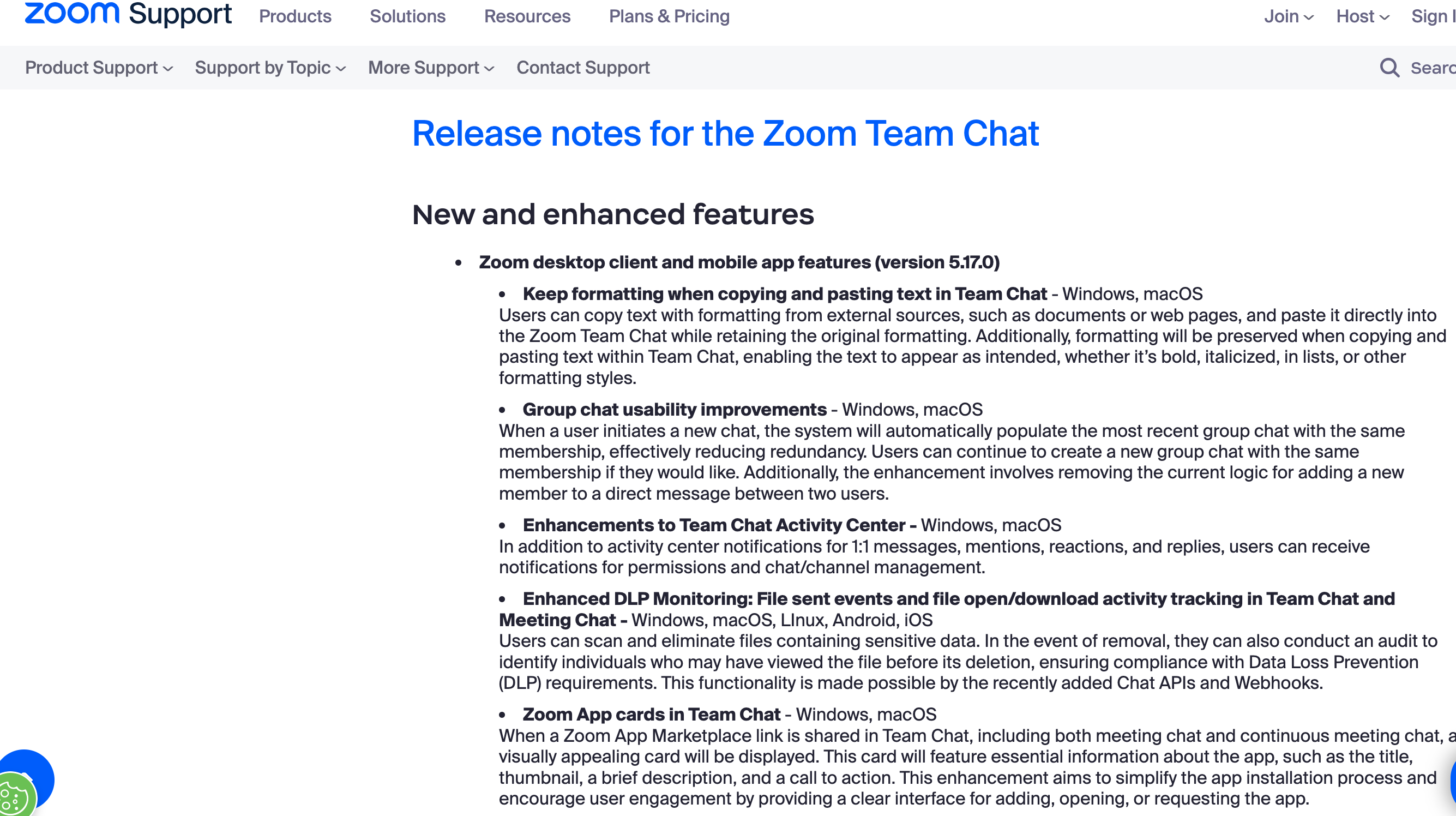
2. Slack: Slack uses an interactive and engaging approach for feature discovery. For instance, their platform has incorporated tooltips, pop-ups, in-app feedback widgets, and interactive messages to guide users through new features. This approach ensures that users are immediately aware of and understand how to use new functionalities as they are rolled out.
Rapidr provides a website feedback widget that helps manage the entire feature discovery process, from capturing feature requests to prioritizing features, informing product roadmap, and notifying users of what's new with release notes.
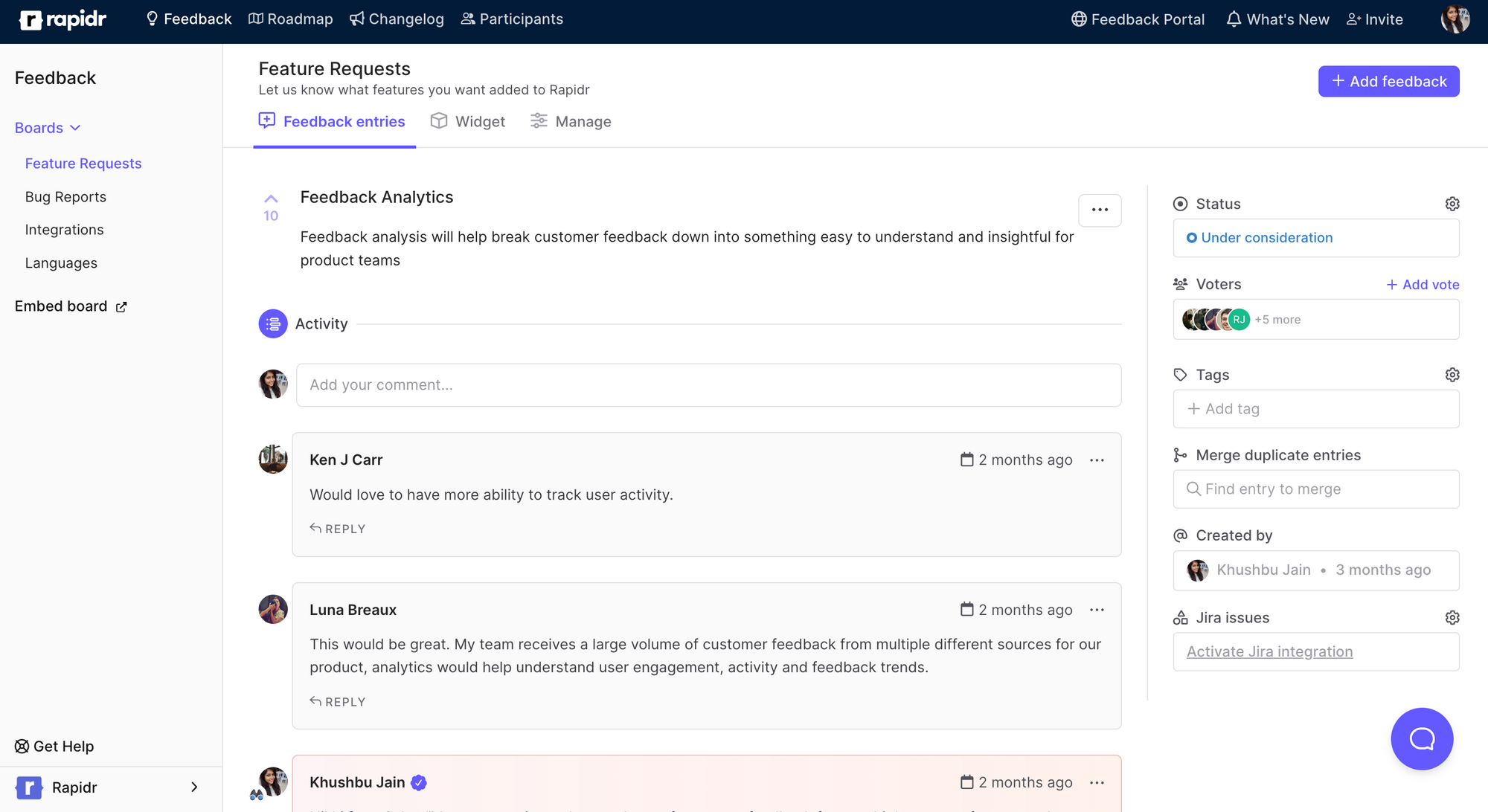
3. Canva: Canva, a graphic design tool, effectively uses feature discovery by highlighting new features with walkthroughs and tutorials within the app. They also employ email and marketing messages to introduce significant updates or new tools, encouraging users to try these features.

4. Dropbox: Dropbox has been known to use in-app notifications and guided tours to introduce users to new features. They also create detailed blog posts and help articles explaining the benefits and uses of new updates, which helps educate users and promote feature adoption. With Rapidr, you can capture in-app feedback by embedding a feedback board directly into your app.
5. Adobe: Adobe regularly updates its suite of creative tools with new features. They use a combination of splash screens, tutorial videos, and in-app notifications to highlight these updates. Additionally, Adobe hosts webinars and creates comprehensive guides to help users understand and use the new features effectively.
How to Use Feature Discovery to Improve Product Adoption?
Feature discovery is crucial for encouraging the use of new or existing features within your platform. You can enhance product adoption effectively by strategically integrating feature discovery into user interactions.
Incorporate Feature Walkthroughs in User Onboarding
Onboarding checklists and interactive walkthroughs can be invaluable initially after a user signs up. By guiding users step-by-step through your platform's most valuable or complex features, you help them understand the utility and context in which these features are beneficial. Use modals and tooltips to highlight specific functionalities to ensure clarity and engagement.
To cultivate user loyalty, you must ensure your product consistently meets and exceeds user expectations. Personalizing the user experience grows loyalty, as users feel the product aligns closely with their needs and preferences.
- Highlighting the most relevant features for each user can make your product indispensable for their daily tasks.
- Incentivizing active use of your product through rewards or acknowledgments encourages continued engagement.
Publish Release Notes and Changelogs for Users
When updates are rolled out, detailed release notes and changelogs can communicate these changes clearly to your users. Not only does this highlight the ongoing improvements to the platform, but it also educates users on new features they might not have discovered yet.
In-app messages can alert users about the latest updates and encourage them to explore new additions, boosting adoption through continuous education.
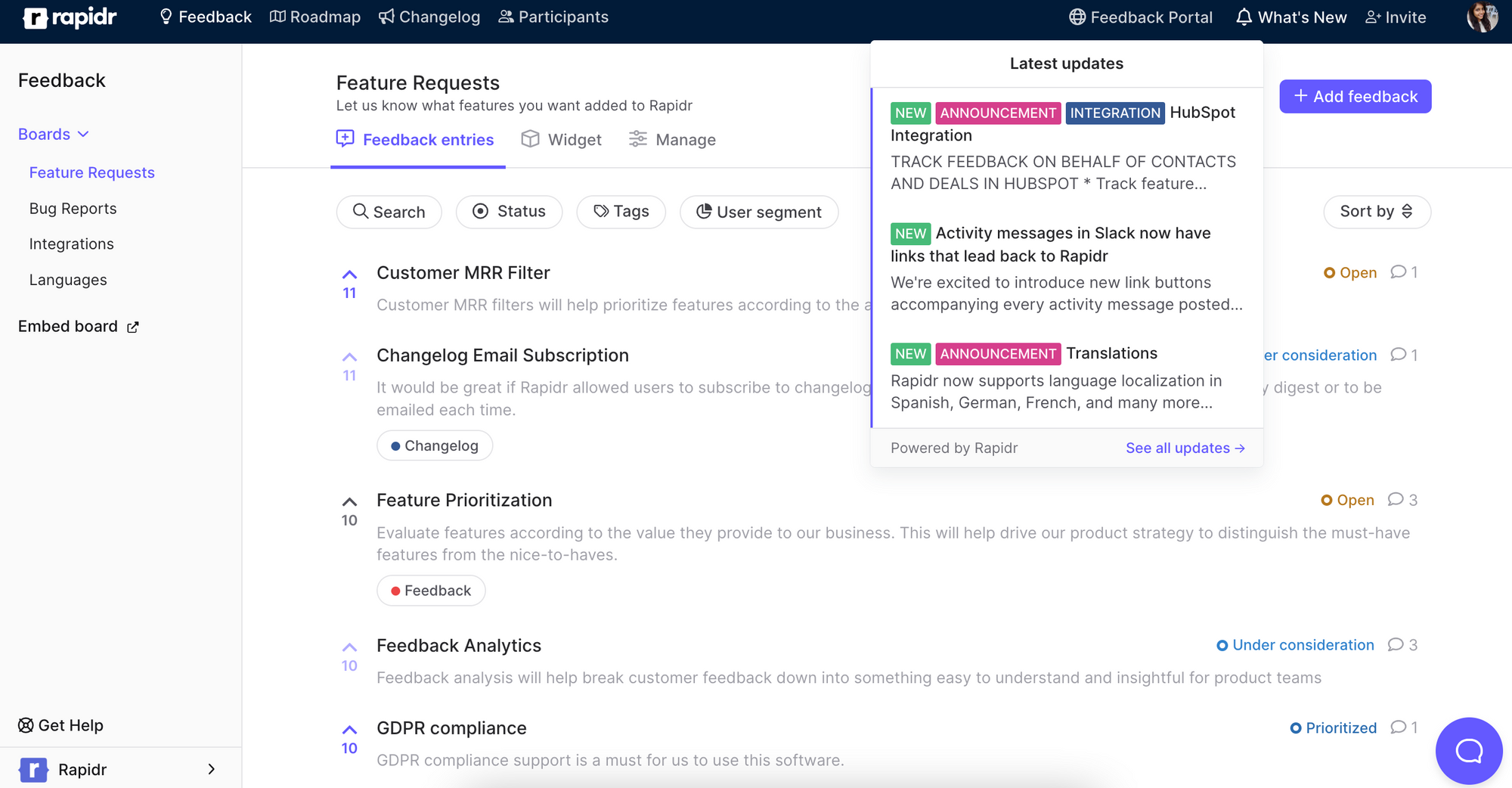
Use In-app Alerts and Pop-Ups for Announcements
You need to leverage in-app communication tools to enhance product adoption significantly. These tools, including pop-ups, banners, and announcements, can guide your users through new features and encourage deeper engagement.
Pop-ups serve as immediate attention-grabbers within your application. To make sure they are practical and not intrusive, follow a few essential practices:
- Time your pop-ups strategically, perhaps when a user has just completed a related task.
- Ensure the content is concise and directly related to your users' actions.
- Utilize onboarding tools to introduce a series of pop-ups that feel like a natural part of the user journey.
In-app announcements can alert users to important updates or new features. They should be:
- Relevant: Tailor announcements to your target audience based on their behavior and usage patterns.
- Timely: Coordinate announcements with feature releases or improvements to maximize impact.
- Visible without obstructing the user's workflow or taking up too much screen real estate.
Targeted messaging allows you to communicate the right message to users at the right time. Personalizing in-app communication increases the likelihood of feature adoption, as users feel guided and informed by interacting with your product.
- Send tailored messages to segments of your user base to encourage them to try specific features they may find helpful.
- Banners and hotspots can highlight features without interrupting the user experience, subtly guiding users toward adoption.
- Keep users informed of updates with a changelog within the app, fostering transparency and trust.
Incorporating User Feedback
Your users are a valuable source of insights into how your product is perceived and can be improved. Incorporating user feedback into your product’s development cycle enhances the features and conveys to users that their input is valued.
Set up channels for users to quickly provide feedback, such as widgets, online community feedback forums, and feedback portals.
Rapidr helps SaaS companies be more customer-centric by consolidating feedback across different apps to keep track of different types of customer feedback, prioritize requests, have a discourse with customers, and close the feedback loop.
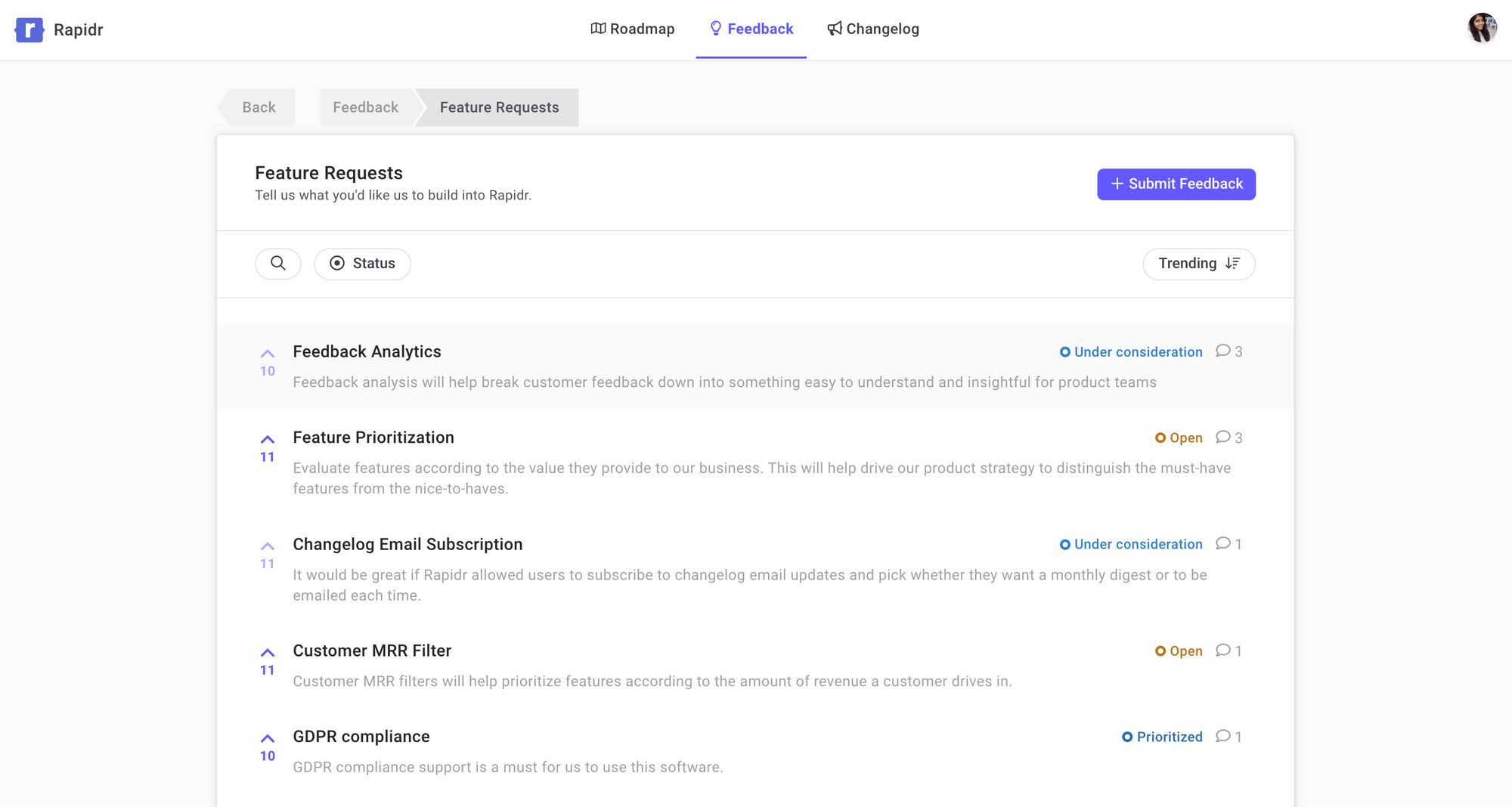
Act on the feedback to improve the product and close the loop by informing users about changes that have been implemented based on their suggestions.
By attentively responding to user feedback, even if it means responding to negative feedback and refining your product accordingly, you solidify the foundation for high user retention and satisfaction. Moreover, efficient customer support serves as a safety net for users, securing their trust in your ability to resolve any issues that may arise.

Gamification and Rewards
Incorporating gamification involves adding game-like elements into non-game environments, like your product or service, to increase engagement and motivation. To implement this effectively, consider the following steps:
- Identify desired user actions: Pinpoint what behaviors you want to encourage, such as feature usage or content creation.
- Design enticing challenges: Create achievable and rewarding tasks, balancing difficulty to keep users from feeling overwhelmed.
- Offer meaningful rewards: Rewards should be aligned with your users' values and can range from unlocking new feature badges to exclusive content.
Self-Service Support Systems
A robust self-service support system empowers users to solve problems without direct assistance, which can be a critical factor in a product-led growth strategy. Here's how to develop an effective support system:
- Provide comprehensive FAQs and knowledge bases: Enabling users to find answers quickly enhances their overall experience and reduces frustration.
- Implement interactive tutorials and guides: These tools guide users through features at their own pace and can improve feature discovery.
- Offer AI-powered support options: Chatbots and automated workflows can direct users to relevant information, leading to faster resolution of inquiries.
Implement Feature Discovery With Rapidr
Feature discovery can boost your product’s user retention and satisfaction by keeping customers engaged and informed. Implementing a strategic approach to highlight new or underutilized features can reduce churn rates and cultivate user loyalty.
Effective feature discovery strategies can profoundly impact product adoption rates. As users become more adept at utilizing new features, their reliance and satisfaction with your product deepen, fostering long-term engagement and success.
To help you in the feature discovery process, it’s always good to have a robust feature management system that allows businesses to stay connected with their customers, continuously learn from them, consistently improve products, communicate new feature releases, and improve product discovery.
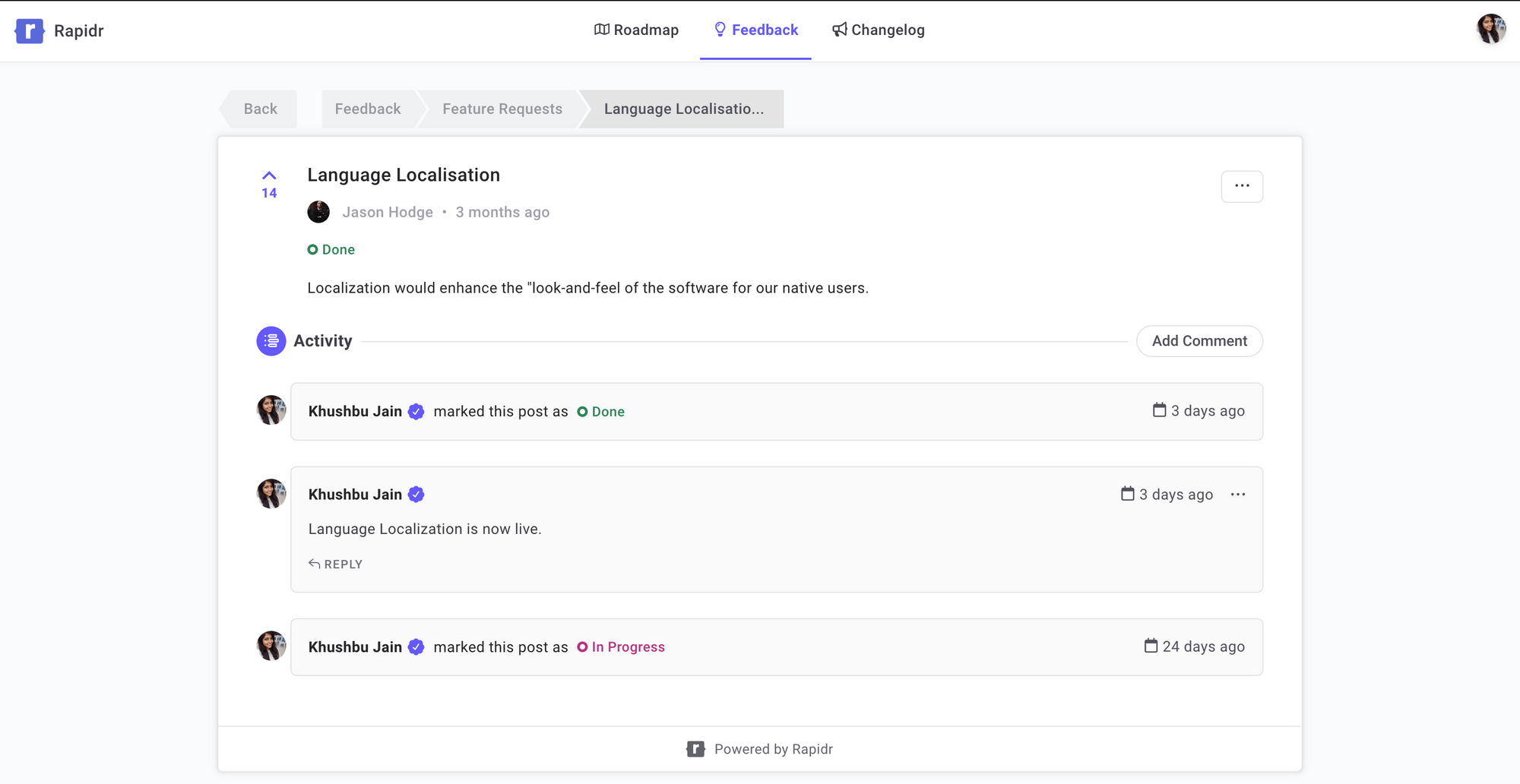
Incorporate customer feedback into your feature discovery strategy:
- Set up a customer feedback system.
- Collect actionable feedback from customers and teammates with feedback portals and in-app feedback widgets.
- Analyze, prioritize, and categorize ideas and feedback to make sense of them.
- Act and create a product development plan with a roadmap.
- Announce new features and product updates to close the feedback loop.
With Rapidr, you can collect, analyze, and organize feedback and engage with customers as their feedback moves through the discovery process. Sign up for free and set up a complete customer feedback system to inform and enhance your feature discovery process.

